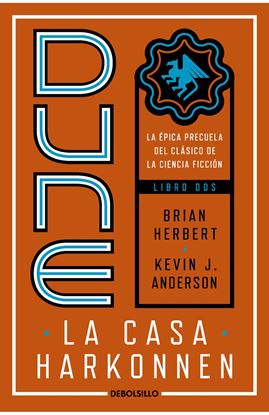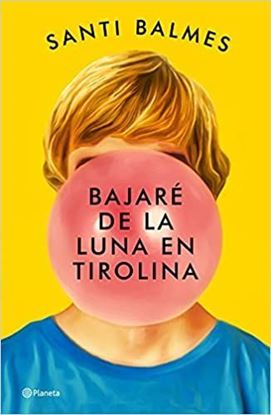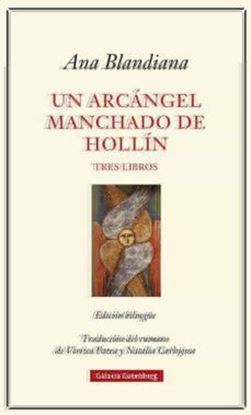

DUNE, LA CASA HARKONNEN (PRE 2) (BOL)
Shaddam ostenta una precaria posición como gobernador del Universo Conocido, la cual depende de que engendre un heredero varón. Su liderazgo es además amenazado por el ambicioso barón Harkonnen, cuyas insaciables ansias de dominio le llevan a conspirar contra algunas de las más poderosas fuerzas del Imperio, con la esperanza de elevar su Casa a un nivel de poder sin precedentes. Sus objetivos principales son la Casa Atreides y la misteriosa hermandad Bene Gesserit. La Hermandad no sospecha esta amenaza, ocupada en culminar el trabajo de siglos y crear un niño-dios que barrerá emperadores, Casas y la propia historia en un terrorífico nuevo orden de tiranía religiosa.
El planeta Dune también padece la atroz esclavitud impuesta por los crueles Harkonnen, decididos a explotar sus recursos y en especial la adictiva melange, especia que solo se encuentra en Dune. Héroes inesperados empiezan a surgir ansiosos por vengarse del barón Harkonnen...
950
BAJARE DE LA LUNA EN TIROLINA (OF2)
David, o Déibid Weirdo, como le gusta que le llamen, es un preadolescente que ve el mundo desde una perspectiva muy diferente a la del resto de su familia y no está pasando por su mejor momento: sus padres se acaban de separar, su hermano mayor, Dano, ha dejado de hablarle sin que Déibid sepa el motivo y, para colmo, se ha enamorado por primera vez de una chica de la que no sabe ni su nombre.
Santi Balmes sumerge al lector en el mundo fantasioso y peculiar de Déibid, los sucesos cotidianos y extravagantes que acontecen en su estrambótica familia y vive con él su despertar a la adolescencia, al amor y a la sexualidad.
500
GUARDAME EN TI
Raúl Zurita es uno de los poetas vivos más deslumbrantes de la lengua española.
Zurita es un referente indiscutible de las letras chilenas y una de las más grandes voces de la poesía contemporánea. Esta selección a cargo de Ignacio Echevarría recorre los amores y los infiernos de la devastada biografía del poeta, así como la convulsionada y luego lánguida historia del Chile del último medio siglo, siempre a traves de una escritura que aspira a moverse con la misma fuerza que la naturaleza. Los versos recogidos en esta antología provienen de los poemarios Tu vida rompiendose y La vida nueva.
450
TERROR
Representada en casi un centenar de teatros en más de veinte países, donde ha cosechado un éxito inaudito,Terroraborda sin tapujos el abrumador problema ético al que se enfrenta el ser humano en situaciones límite, invitándonos a una reflexión profunda sobre el valor y el precio de la libertad.
Cada vez que se produce un atentado terrorista en un país occidental, provocando un sentimiento general de pánico y estupor en la sociedad, surge inevitablemente un dilema difícil de resolver: ¿estamos dispuestos a sacrificar nuestra libertad individual en aras de la seguridad colectiva? ¿Cuál es el camino correcto para preservar la democracia?
Como oficial de la Fuerza Aérea de Alemania, Lars Koch debe intervenir en una situación de emergencia: un terrorista ha secuestrado un avión de Lufthansa y pretende estrellarlo contra el Allianz Arena de Múnich, donde en ese momento setenta mil espectadores asisten a un partido de fútbol internacional entre las selecciones de Alemania e Inglaterra. Contraviniendo las órdenes de sus superiores, y consciente de la responsabilidad que deberá asumir por su terrible acto, Koch derriba el aparato para impedir la masacre en el estadio, causando la muerte de las ciento sesenta y cuatro personas que viajaban a bordo.
995
UN ARCANGEL MANCHADO DE HOLLIN
Se reúnen en este volumen tres libros centrales de la poeta rumana Ana Blandiana (1942), una de las voces más altas de la literatura europea contemporánea: "Estrella predadora", "La arquitectura de las olas " y "El reloj sin horas". Testimonia un periodo negro y desprovisto de esperanza en la historia de Rumanía, cuando la existencia misma de la poesía ofrecía algo parecido a la esperanza.
1,350
UNDERGROUND (MAXI) (BOL)
Una estremecedora crónica de la fragilidad de la sociedad actual.
Pese a las intenciones de quienes lo perpetraron, el ataque con gas sarín que se produjo en el metro de Tokio en marzo de 1995 sólo se cobró once vidas. Sin embargo, miles de personas resultaron heridas y muchas otras sufrieron sus consecuencias y secuelas. El novelista Haruki Murakami entrevista a las víctimas, a los que vivieron y sufrieron en propia piel el atentado, para establecer con precisión qué ocurrió ese día en las distintas líneas de metro afectadas. También para desentrañar la verdadera historia que se ocultaba bajo un acto terrorista que convirtió una anodina mañana de lunes en una tragedia nacional. Pero, sobre todo, para contestar a una pregunta primordial: ¿por qué? ¿Por qué la violencia terrorista, o cualquier violencia? ¿Y por qué en ese momento y lugar concretos? Como contrapunto, Murakami nos ofrece los testimonios de los miembros de la secta que participaron en aquel ataque y sus posibles motivos.
995














